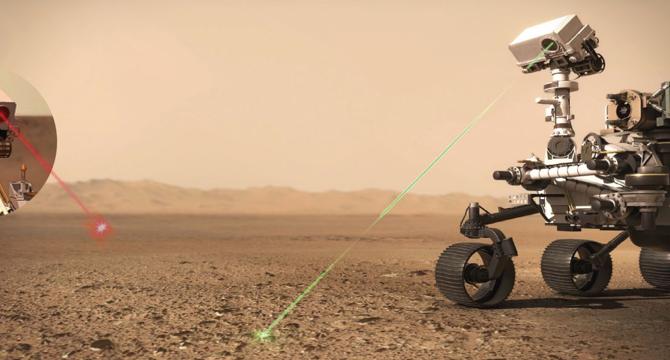Universe Today
1M
424

Image Credit: Universe Today
This Laser Could Find Fossil Microbes on Mars
- Life on Earth may have originated in warm ponds, and similar conditions may have existed on Mars billions of years ago.
- NASA's Perseverance rover is equipped with a laser to analyze rocks and search for organic compounds as potential biosignatures of ancient life on Mars.
- A new laser is being developed to detect microbial fossils in gypsum deposits on Mars, based on the rapid formation and preservation potential of gypsum.
- Research published in Frontiers in Astronomy and Space Sciences outlines the method for detecting biosignatures in Martian sulfate minerals.
- The study conducted in Algeria tested the method on gypsum deposits that mimic those found on Mars and identified fossil filaments and necessary chemical elements for life.
- Presence of dolomite, clay minerals, and pyrite surrounding the gypsum indicates the potential existence of ancient life on Mars.
- Additional tests are needed to distinguish true biosignatures from abiotic mineral formations and improve confidence in detecting life on Mars.
- Future Mars missions like ESA's Rosalind Franklin rover could benefit from this technology to search for evidence of past life on the planet.
- If successful, this method could be integrated into upcoming Mars rover missions to enhance the search for fossilized microbial life.
- Developing reliable techniques for detecting ancient life on Mars is crucial for advancing our understanding of the planet's past and potential habitability.
Read Full Article
25 Likes
For uninterrupted reading, download the app